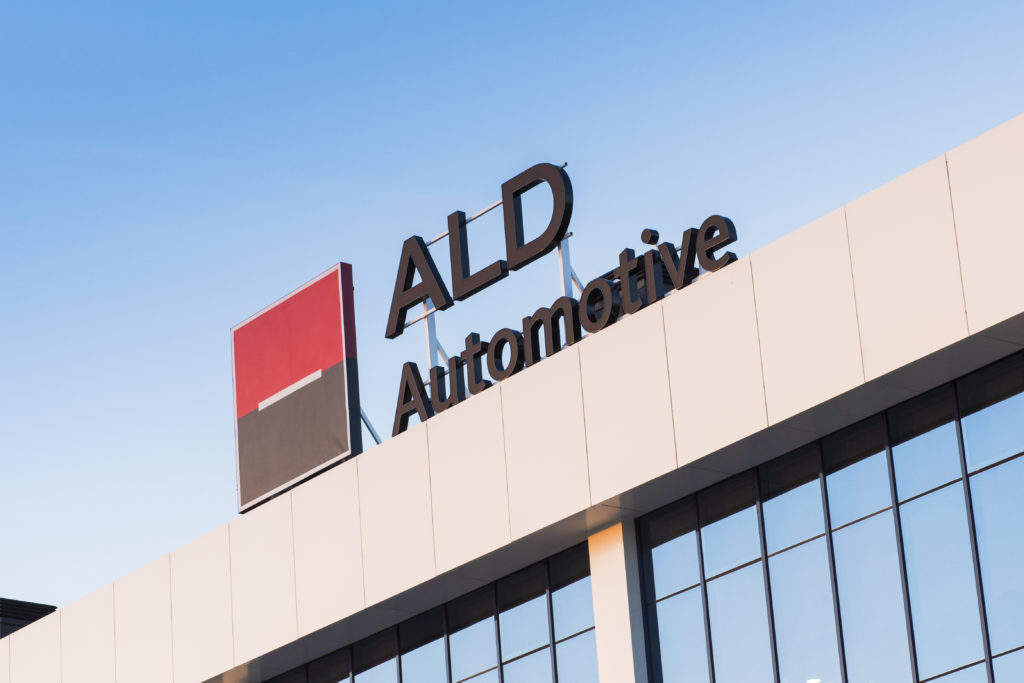
There has been mixed messages
from Nordic countries in the first half of the year, where, apart
from Sweden, new business has increased. Elza
Holmstedt-Pell takes a closer look at the different
trends taking place in the region.
 The Nordic countries have enjoyed strong car leasing
The Nordic countries have enjoyed strong car leasing
sectors, and the move of domestic car manufacturers to Asia has
changed the trends in that market. Conservatism and caution can be
associated with the Nordic economies and, in the current financial
state, careful investors are challenging the outlook for strong
growth on the leasing market in the near future.
Fredrik Lindblom, partner at DLA
Piper Norway, says that there is no “great positivity” in the
Nordic leasing market at this time.
“I keep hearing that the industry’s
pretty flat right now,” he says, explaining that the demand for
financing has decreased over the past few months.
How well do you really know your competitors?
Access the most comprehensive Company Profiles on the market, powered by GlobalData. Save hours of research. Gain competitive edge.

Thank you!
Your download email will arrive shortly
Not ready to buy yet? Download a free sample
We are confident about the unique quality of our Company Profiles. However, we want you to make the most beneficial decision for your business, so we offer a free sample that you can download by submitting the below form
By GlobalData“Rainy days always come and quite
periodically,” says Stefan Johnsson of SEB Leasing and
Factoring.
He has noticed a slowdown in
investments the past few months but says that the market is still
relatively stable. The current downturn is, according to Johnsson,
reflected in all other sectors too, and will not affect leasing
long term.
“A positive thing is that people
don’t want to own peripheral equipment when the budget is tight,
and can lease them to focus on their core activities,” he says.
“It feels quite uncomfortable to
speak about stability in the European market now,” says Fredrik
Enhörning of Swedbank Finans, which has a market share of 12% in
the
business market and 7% in the consumer market.
“But,” he adds, “during normal
circumstances, if they exist, and from a product perspective, I
would say that the Swedish financing market is stronger than any
other European market. However, the shifts will be bigger than on
some markets. This is both because leasing is more prevalent in
some markets and because leasing has a wider spread and higher
credit risks.”
Different trends in the
region
Enhörning also explains that the
Nordic markets are, to some extent, quite different. For example,
in Finland, big-ticket leasing is common and stands for much of the
market, whereas in Norway, the penetration of leasing is bigger
when it comes to the small and mid-ticket items.
Sweden has seen a great increase in
IT leasing, which Denmark and Norway haven’t, but new leasing
business there has dropped 1.9%. The drop represented a 22.6% fall
in equipment leasing, whereas new business of vehicle leasing
increased by 13.8%.
During the financial crisis,
Denmark was hit worst among the Nordic countries and the value of
leasing assets went down from DKK50.7bn (€6.8bn) to DKK43.1bn in
2010.
Christian Brandt, managing director
of the Danish Association of Finance Houses, says: “We’re still not
back to levels before the crisis, but we’re moving gently along the
right track. Good car sales in 2010 and 2011 are particularly
contributing positively.”
The car leasing numbers echo
Brandt’s observation, with new business in the car leasing segment
increasing 41% between 2009 and 2010.
Cars
 Passenger car leasing has increased throughout the region –
Passenger car leasing has increased throughout the region –
but to different extents and because of different reasons. When it
comes to fleets, Lindblom from DLA Piper says the industry is quite
flat and that even though some growth has been displayed, the
growths are generated in a market that is relatively small among
the Nordics.
New business written in the car
leasing segment of Norwegian leasing increased 45% between 2009 and
2010, compared to a drop of 7% between 2008 and 2009.
The first nine months of this year
are also positive, showing a 9% increase compared to the same
period last year for passenger cars, and a 12% increase for car
leasing in total.
“It is surprising that there has
been such a big increase,” says Anne-Lise Lööfsgard, managing
director at Norway’s Finance House.
Finnish car leasing went up 5.2% in
terms of new business between 2009 and 2010, compared to a drop of
12% in new business in the rest of the leasing market.
Timo Ahonen, representative of
Finland’s Finance House and SEB leasing in Finland, believes that
this has to do with increased car sales and does not prove
increased product penetration.
“That would require a tax change or
some change like that,” he says.
He adds that they have seen a
cultural change in people wanting to lease cars more over the past
15 years.
This change of tradition seems now
to be taking place in Sweden, where operational leasing of cars is
increasing every year in a market heavily dominated by financial
leasing, especially customer leasing of between one and 10
cars.
Thomas Fransson at Autolease
Sweden, who has been in the car leasing industry for more than 15
years, explains that car leasing in general is increasing by about
1% every year, but operational leasing of cars has increased by
between 12% and 15% every year for the past 15 years, apart from
this year, due, he says, to the worries about lease accounting.
The failure to keep Volvo and
SAAB’s manufacturing in Sweden has led to the companies having less
influence on the car leasing market, making operational leasing of
cars increase.
“SAAB basically doesn’t exist and
Volvo is Chinese, so I think it will increase even more,” says
Fransson.
He explains that Norway, Finland
and Denmark are all relatively big on operational car leasing, but
Sweden has lagged behind because of domestic car manufacturers
solely offering financial leasing and SMEs not realising the
benefits of operational leasing.
Conservatism
“People at smaller companies seem
to think ‘I’m going to do what I’ve always done, I only have so
many cars anyway and I don’t think I can get great prices’,” says
Fransson, who was part of the LeasePlan team that introduced Sweden
to operational leasing in the mid-1990s.
Carsten Thorne, Société Générale
Equipment Finance’s Scandinavian chief executive, comments that
apart from car leasing there is a rather conservative approach to
operational leasing throughout the Nordic countries.
He says that there is a question of
supply and demand – customers have not shown great interest in
operational leasing and lessors have adapted to that.
Out of Autolease’s roughly 300,000
B2B cars in Sweden, around 200,000 are financially leased, 80,000
are paid for with cash and the remaining 10,000 to 20,000 are
operationally leased.
On the contrary, when it comes to
its 120,000 fleet cars, 8,000 are financed by cash and, of the
remaining 112,000, 55% are financially leased and 45% are
operationally leased.
Fransson thinks customers at
smaller companies will soon jump on board as well, but that it
takes them a bit longer to abandon the old traditional
approach.
 The
The
conservative approach of smaller companies to leasing as a way of
financing their investments is something that has been noticed by
Timo Ahonen too, in more sectors than car leasing. Despite the
leasing environment in Finland being well-established, he would
like to see a trend of smaller companies having better acceptance
of leasing in the equipment sector.
Finland’s machinery and
construction sector has dropped 2.4% in terms of new leasing
contracts signed in 2010, and leasing as a whole has seen a
decrease of 12.4% in new business throughout the year. Ahonen
explains this as investors being careful, leading to figures
dropping because of fewer big-ticket leasing deals.
He emphasises that leasing in
Finland is still strong and stable, but that larger transactions in
the market distort total figures. Nonetheless, he believes he will
soon get to see the trend he wishes for, of smaller companies
turning more to leasing as a method of financing rather than
owning, especially in the equipment sector.
In Denmark, equipment leasing has
taken a hit, dropping 15% in value between 2009 and 2010.
Christian Brandt, managing director
of Denmark’s Finance House, says that agriculture especially has
become a “tight” market and will probably remain in that condition
for a while because of a tough market.
“The bad world economy leads to a
poor outlook for Danish transport, which in turn leads to other
segments of the leasing market being pulled in the wrong
direction,” he says.
Sell-offs
This year, the country has seen
Finans Nord being sold by Spar Nord Bank, in order to help the bank
increase liquidity and to reduce its government debt following a
state guaranteed bond issued during the financial crisis.
Finans Nord was bought by rival
bank Jyske Bank, who, from October this year, acquired its fleet
business and took over the forward-looking activities of its Danish
equipment leasing business. Brandt would not be surprised if
another similar sell-off takes place.
He says: “It’s certainly not
impossible, though it can happen in many different forms. We have
already seen different types of consolidation in the industry, so I
think we are over the worst.”
In Sweden, leasing for office and
communication equipment are both down between 2009 and 2010, office
equipment falling as much as 56% in terms of book value at the end
of the year.
“People hold on to their equipment
in these times, and wear it out before investing in something new,”
says Lindblom.
However, leasing of graphical
equipment is slightly up and, in contrast to Denmark, leasing
agriculture and construction machines went up 18%.
Agriculture and
trucks
Per-Eric Ericsson, regional head of
Scania in Sweden and Denmark, says he has seen a rejuvenation in
the agriculture and truck business in the past few years.
“The sector has been conservative,
which is one of the reasons why businesses have wanted to own their
equipment. But now we’re seeing more of an openness for leasing as
a financial product,” he says.
He emphasises that the conservatism
has applied to Scania as a supplier as well, but that they are
working on increasing their leasing products.
“The share of leasing will increase
in the near future. The challenge,” he says, “is to deal with an
increasing leasing portfolio over time, in different types of
financial markets, to avoid ending up with unsold vehicles for a
long time, or taking on vehicles with the wrong value, in case one
fails to estimate the correct residual value.”
The IT sector provides the most
mixed perspectives from the Nordic region. In Sweden and Finland
it’s a strong and growing market, whereas in Norway it sees little
growth, and in Denmark new business in the IT sector has dropped by
13%.
Société Générale’s Thorne
underlines technology and modernism as characteristics of the
Nordic countries, and sees great potential for IT leasing in the
region.

Information
technology
The percentage of internet users
compared to the population as a whole is around 90% for all of the
Nordics, compared to around 80% for countries such as France and
Germany, and 50-65% in Italy and Spain. IT leasing increased by
112% in Sweden between 2009 and 2010, in terms of book value.
Enhörning, at Swedbank, explains
that a reason behind the growth of IT leasing has been a type of
staff package where employees have been able to lease or rent a
computer from the company, paid for with a deduction of their gross
salary. A similar concept is available for company cars. Anders
Grönberg at Nordea Finans recognises IT leasing as one of the
biggest potentials on the Swedish leasing market.
“The penetration on the market is
really high,” he says.
In Finland, the IT sector makes up
23.6% of the leasing market and grew 2.3% in terms of new business
in 2010. In Norway, IT equipment and office equipment are presented
in the same category, and in the first nine months of this year,
the sector has stagnated with a growth of 0.3% in terms of new
business.
Denmark’s drop of 13% does not
surprise Brandt: “Several leasing companies have pulled out of this
market,” he says.
In all of the Nordic countries,
bank-owned lessors are dominating the market. Ahonen says that
independents are increasing slightly in the IT and car sector, and
that what has made them increase are packages with “all kinds of
extra value services around them”.
He says that he believes banks are
more effective in distribution and more beneficial as they have
more capital. But he doesn’t see a change being impossible; if
there is an increase of independents globally it might happen in
the Nordics as well.
Grönberg at Nordea Finans Sweden
says that in niche sectors such as car leasing, captives such as
Scania and Volvo compete with them, but apart from this sector,
banks are dominant, and he believes that trend will remain.
Johnsson at SEB explains that even
though there might be less competition, the big banks have more
capital, which contrasts with the situation in other countries,
where there are more actors but less resources in general. He
believes this is part of the Nordic “conservatism” and that
customers prefer to look for financing from their own banks rather
than an independent financier.
Fredrik Lindblom, a partner at DLA
Piper in Norway, explains that the difference in Norway is that the
firms that dominate the leasing market are not only national or
regional, but among the biggest players globally, such as Société
Générale, Santander and GE Capital.
In Sweden, ‘the big four’ –
Swedbank, SEB, Handelsbanken and Nordea – dominate the market, and
the Finnish and Danish markets look similar.
Andrew Denton, chief operating
officer of CHP Consulting, which provides leasing software
solutions for several of the region’s major players, is
enthusiastic about the Nordic market. From a standing start in
2008, CHP has seen business grow in the region to the extent that
the Nordics is one of the company’s most significant markets.
“It is an incredibly strong market;
it is a growing market for us and an innovative market and a
perfect place for us to be and one we have great affection for,”
says Denton.
He says the approach to business in
the region is pragmatic and a lack of parochialism makes it a good
market to sell in to. He predicts, both for CHP and its clients,
stability is in store for the Nordics.
“The Nordics have very stable
economies and are some of the most admired economies in world,”
says Denton. “Economic stability and the fact the banks are
incredibly well run means, from a leasing perspective, a very
bright future for the Nordic market.”
Outlook
Société Générale’s Thorne says that
he believes there has been consolidation in all markets now, and
that the demand of leasing in the region is high. He believes that
the balance between industry, high-tech and transport leasing will
develop at a relatively similar rate and higher investments will be
seen in all those segments. “We have the right culture for leasing,
and efficient technology,” he says.
SEB’s Johnsson sees great potential
in infrastructure projects and says that, in the current financial
state, companies will rationalise and invest in equipment rather
than hiring more people, which will benefit the leasing sector.
Ahonen hopes to see more
international players coming to the Finnish and Nordic market.
“We’re quite isolated, and there is a language barrier, but we have
seen many international players recently,” he says.
Swedbank’s Enhörning says: “We will probably lower leasing
volumes for a little while, just like in 2008, but sooner or later
companies will need to renew their fleets, entrepreneurs will need
to renew their excavators, and farmers will need new harvesting
machines.”






